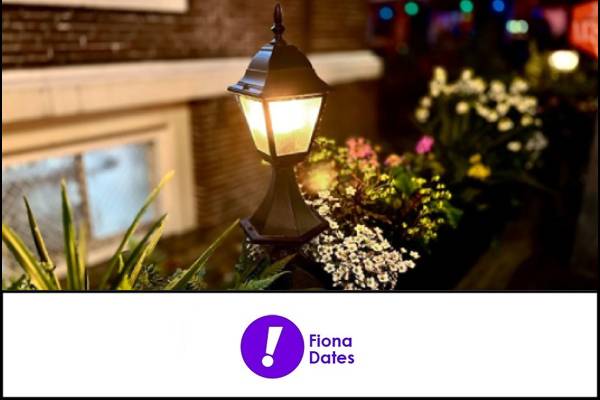
Why Low-Voltage Systems are the Most Popular Choice for Homeowners?

Lighting your yard isn’t just about utility – it’s about creating a welcoming, well-designed space that works after dark. In recent years, low voltage landscape lighting has surged in popularity among homeowners looking for the perfect blend of safety, efficiency, and style. For anyone planning the best outdoor landscape lighting setup, it’s time to take a serious look at why “low-voltage” is showing up more often.
What is Low Voltage Landscape Lighting?
Simply put, low-voltage lighting systems operate at around 12 volts (stepped down from the standard 120 volts via a transformer). This kind of setup is now common in residential outdoor lighting because it offers greater design flexibility, safer installation and lower energy consumption. According to older industry guidance, most modern landscape lighting systems run on low-voltage.
With low-voltage fixtures now available in a wide variety (path lights, uplights, spotlights, well lights), homeowners have more control to design a subtle, inviting nightscape instead of bright, harsh beams.
Popular Applications for Homeowners
1. Pathway and Garden Lighting:
One of the simplest and most effective ways to use low-voltage systems is along walkways and garden beds. These lights guide visitors safely, highlight your landscape elements and add a soft glow that changes how your outdoor spaces look after sunset.
2. Accent Lighting for Trees, Plants or Architecture:
Large trees, decorative shrubs, home facades and architectural details all benefit from accent lighting. One method: use low-voltage bullet lights to highlight the corners of a house, then use softer wash fixtures to fill in the space in between. Uplighting trees from the trunk or downlighting from a branch, creates drama and depth without overwhelming the scene.
3. Security Lighting with Motion Sensors:
Low-voltage lighting systems can also serve a practical purpose – bedside security. By placing sensors at dark spots (near service doors, garage entries or secluded garden corners), you can trigger illumination when needed. Because low-voltage systems are safer and easier to install, they’re a favorite for homeowners who want function and style.
Why Homeowners Prefer Low Voltage Over Line Voltage?
Here’s where major differences become clear:
Safety First:
Because the system runs at around 12 volts, the risk of electrical shock is significantly lower compared to standard 120-volt outdoor lighting. For yards that are wet, landscaped or used by children and pets, that safety margin is important.
Lower Cost & Energy Efficiency:
Low-voltage systems are more cost-effective to install and operate. The transformer reduces household current to a level that uses less power overall. Plus, with modern LED low-voltage fixtures, you’re getting high performance with minimal energy draw.
Flexibility in Design and DIY-Friendly:
One of the biggest advantages is the ability to adjust your lighting over time. Want to add another pathway light? Want to reposition an accent light? Low-voltage cable runs and fixtures make changes easier. Many homeowners comfortable with basic DIY skills can install these systems themselves, saving on installation costs.
Better Illumination Control:
You’re less likely to end up with a yard lit like a stadium when you choose a low-voltage system designed for landscape lighting. Because the plan is intentionally dialed in (proper fixture spacing, correct beam angles and bulb selection), you get lighting that enhances instead of overwhelms. Industry guidelines suggest designing in “pools of light” rather than a continuous wash.
Choosing the Best Outdoor Landscape Lighting
If you’re ready to take the next step and shop for low voltage landscape lighting, there are a few things to pay attention to:
- Fixture type: Decide whether you need pathway lights, accent lights (like bullet or wash lights) or uplights/well lights. Each contributes a different effect.
- Bulb technology: LEDs are clearly the modern standard long life, low heat output and high durability. Older halogen bulbs still exist, but they cost more in energy and replacement.
- Beam spread & color temperature: For a warm, inviting look, aim for bulbs around 2,700 K to 3,000 K. Too cool (4,000 K and up) and the effect may feel harsh rather than atmospheric.
- Transformer and cable sizing: Even a low-voltage system must be correctly sized so voltage doesn’t drop unpredictably. Proper design means better performance and fewer headaches.
- Weather and installation quality: Ensure fixtures are rated for outdoor use and protected from moisture, corrosion and other hazards. Good materials (brass, copper) matter, especially in damp climates.
In the game of outdoor lighting, low-voltage systems have become the homeowner’s smart choice – not just because they’re cheaper or safer, but because they allow controlled, refined lighting design that enhances both aesthetics and functionality.
Whether your focus is on creating the best outdoor landscape lighting, accentuating your garden’s beauty or installing a system you can upgrade over time, low voltage is the right direction. If you’re ready to elevate your outdoor space, check out Best Pro Lighting’s collection of high-quality low-voltage fixtures geared toward residential applications.
Don’t let the darkness hide your home’s best features. Shop for low voltage landscape lighting at Best Pro Lighting today and bring your landscape to life after dusk.
